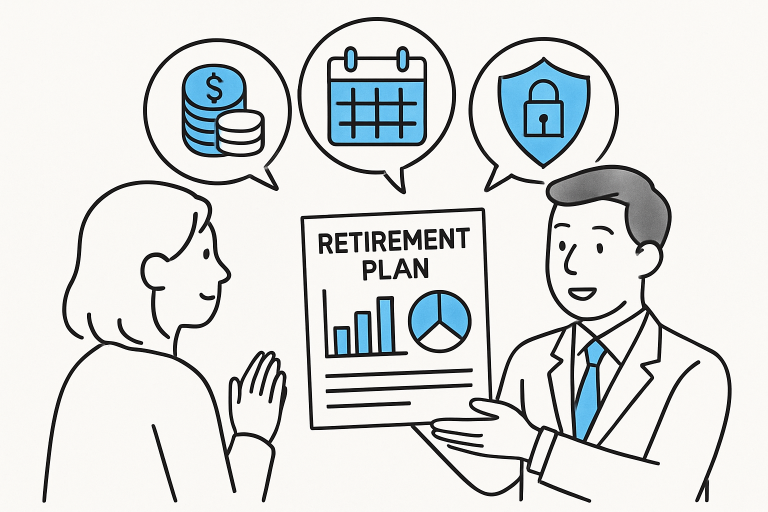Emotional stress is the load created when inner experience and outer demands collide. It isn’t just “too many tasks” or “bad mood.” It’s the accumulation of unprocessed feelings, threat signals from the nervous system, and stories the mind tells when life feels uncertain. Left unattended, it spills into sleep, focus, relationships, and health. The good news: emotional stress is workable. With the right sequence: body first, then mind, then action, it becomes a signal, not a sentence.
How Emotional Stress Actually Shows Up
Before we can work with stress, we need a clear map of how it operates in real time. Most people notice the physical noise first, then the thought spirals, and only then the behavior loops that seem to reduce tension now but create problems tomorrow. Naming the layers gives language to steer the day rather than be dragged by it.
- Body signals: tight jaw, shallow breath, racing heart, clenched posture, headaches, gut discomfort, restless sleep. These are not “overreactions”; they’re the nervous system preparing for threat, real or perceived.
- Thought patterns: catastrophizing, all‑or‑nothing thinking, mind‑reading others’ intentions, replaying conversations, time‑traveling to worst‑case futures.
- Behavior loops: doom‑scrolling, procrastination, snapping at loved ones, spinning on low‑stakes tasks, or avoiding helpful actions.
Naming the pattern matters. Once we can say, “I’m in a stress cascade: body high, thoughts loud, actions scattered,” we have leverage to intervene without blaming ourselves.
Regulate Your State First: Breath, Posture, and Sensory Resets
State drives strategy. Before problem-solving, shift the body toward “safe enough.” With the Liven app, even two minutes often suffice to lower intensity and reclaim choice. The target isn’t perfect calm; it’s a manageable state where decisions aren’t worsened by arousal.
- Lengthen the exhale: in through the nose 4, pause 1, out through the mouth 7–8, for 10–12 breaths. Longer exhales nudge the parasympathetic system and calm arousal.
- Unclench and stack: feet grounded, pelvis neutral, shoulders heavy, tongue off the palate, eyes on a stable point. Posture signals safety to the brainstem and softens reactivity.
- Sensory bookends: warm mug, cool water on wrists, brief sunlight, naming five things you can see and three you can hear. Concrete inputs widen attention and break cognitive tunneling.
- Micro‑movement: 60–90 seconds of slow joint circles or a short walk. Motion metabolizes stress chemistry and helps thoughts become less sticky.
Two minutes here can save hours of spinning later. The goal isn’t relaxation; it’s enough downshift to choose the next wise step.

Work With Thoughts, Not Against Them
Once the body eases, meet the mind with structure rather than debate. When the frame is clear, thoughts stop shouting over each other; linearity returns: what is true now, what matters today, what can wait. It’s also reasonable to vet support tools without letting them hijack focus.
In the middle of this cognitive reset, a neutral check like the Liven can help clarify whether lightweight digital prompts fit your attention and reminder style without derailing focus from the core task — designing behaviors that actually happen.
- Validate + agency: “This is genuinely hard, and I can influence the next ten minutes.” Truth plus choice beats forced optimism.
- Three filters for clarity: What is certain right now? What matters most today? What can wait without real cost?
- Reframe extremes: replace “always/never” with “often/sometimes,” swap “must” for “prefer,” and test “What else could be true?” Small language shifts soften the threat.
- One‑page offload: write everything in your head for five minutes, then circle one item you can touch now. Thinking ends where action begins.
Act Small, Repeat Often: Routines That Hold When You Can’t
Stress shrinks bandwidth, so you need “rails” that carry you when willpower is thin. Break the day into a few anchors: morning start, one micro‑move, basic body care, an evening landing. Repetition builds a sense of footing.
- Morning anchor: curtains open, three slow breaths, water before coffee. Predictability beats intensity.
- The 10‑minute plan: one micro‑task that moves life forward, reply to one message, prepare a simple lunch, set clothes for tomorrow, file a document.
- Energy budgeting: place the most meaningful task in your natural peak hour; keep off‑peak slots for admin or movement. Task‑to‑energy matching prevents avoidable crashes.
- Minimum viable nourishment: “color on the plate” rule and a five‑minute walk after meals. Tiny, repeatable inputs stabilize mood and sleep.
- Night landing: note one thing that went okay, write the first step for tomorrow, dim lights. Consistent landings calm nights even when days are loud.
If the day derails, reset with a single action from any category above. Progress is practice, not perfection.
Boundaries, People, and Meaning: Deeper Buffers for Emotional Load
Tactics help today; buffers hold you longer. This is about redistributing life’s weight: clear “no’s,” specific asks, small repairs in relationships, values‑based moves, and reminders of meaning. These don’t remove pain; they make it bearable and purposeful.
- Boundaries as care: say “not now” to low‑stakes asks; time‑box availability; batch recurring drains weekly. Protect sleep, food, movement, and one daily human contact.
- Ask specifically: “Could you check in tonight for five minutes?” or “Can you send your notes?” Clear requests are easier to accept, and to fulfill.
- Repair and gratitude: a three‑line note — what you appreciate, what you learned, one thing you’ll try next time. Small repairs lower background stress and keep trust intact.
- Value micro‑acts: pick two values for today and express each in under two minutes. Stress drops when behavior matches identity.
- Meaning map: three sentences on why this season matters in your bigger arc. Purpose won’t erase difficulty, but it will direct effort.
These buffers don’t eliminate pressure; they keep it from crushing the parts of life that restore you.
Conclusion
Emotional stress is a composite of body alarms, mind stories, and reactive loops. It becomes workable when addressed in sequence: regulate state, clarify thoughts, take one grounded action, and protect deeper buffers — boundaries, people, and meaning. None of this requires perfect conditions. It asks for small, repeatable steps that change the state from which choices are made. With practice, the same signals that once flooded your day become early warnings you know how to meet: a longer exhale, a steadier posture, a kinder sentence, a single next step. Over time, this turns stress from a spiral into a signal, and your response into a skill you can trust.







